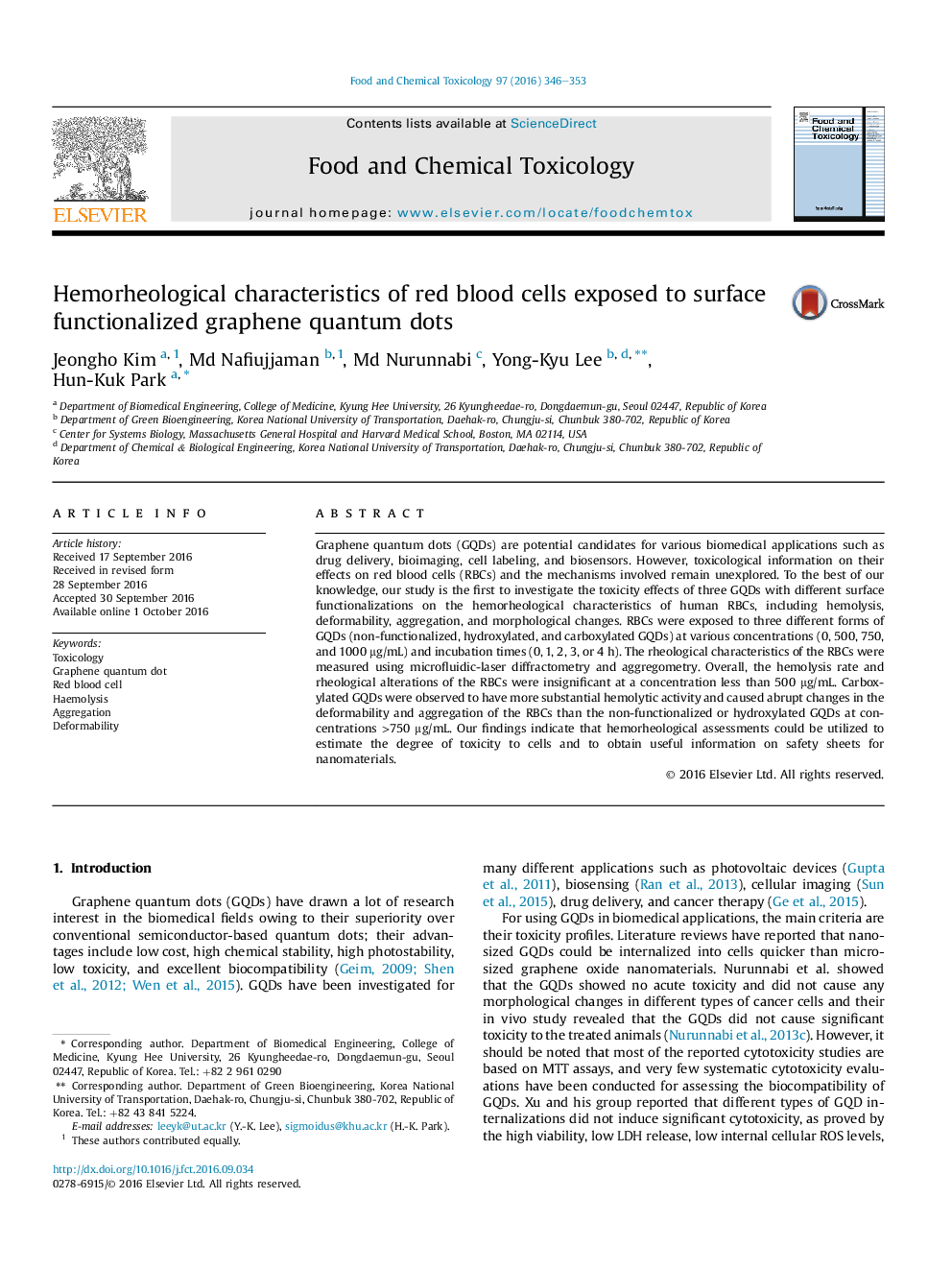| Article ID | Journal | Published Year | Pages | File Type |
|---|---|---|---|---|
| 8549341 | Food and Chemical Toxicology | 2016 | 8 Pages |
Abstract
Graphene quantum dots (GQDs) are potential candidates for various biomedical applications such as drug delivery, bioimaging, cell labeling, and biosensors. However, toxicological information on their effects on red blood cells (RBCs) and the mechanisms involved remain unexplored. To the best of our knowledge, our study is the first to investigate the toxicity effects of three GQDs with different surface functionalizations on the hemorheological characteristics of human RBCs, including hemolysis, deformability, aggregation, and morphological changes. RBCs were exposed to three different forms of GQDs (non-functionalized, hydroxylated, and carboxylated GQDs) at various concentrations (0, 500, 750, and 1000 μg/mL) and incubation times (0, 1, 2, 3, or 4 h). The rheological characteristics of the RBCs were measured using microfluidic-laser diffractometry and aggregometry. Overall, the hemolysis rate and rheological alterations of the RBCs were insignificant at a concentration less than 500 μg/mL. Carboxylated GQDs were observed to have more substantial hemolytic activity and caused abrupt changes in the deformability and aggregation of the RBCs than the non-functionalized or hydroxylated GQDs at concentrations >750 μg/mL. Our findings indicate that hemorheological assessments could be utilized to estimate the degree of toxicity to cells and to obtain useful information on safety sheets for nanomaterials.
Related Topics
Life Sciences
Agricultural and Biological Sciences
Food Science
Authors
Jeongho Kim, Md Nafiujjaman, Md Nurunnabi, Yong-Kyu Lee, Hun-Kuk Park,
